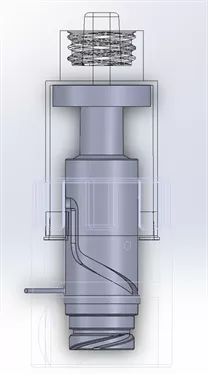Redesigning the ‘Hub Cap’
Decreasing Central Line Associated Blood Stream Infections (CLABSI)
Principal Investigator: Shyam Raghavan, MD
Team Members: Lan Vu, MD, Hanmin Lee, MD, Neil Ray
Challenge
Central line-associated bloodstream infections (CLABSI), estimated to be the eight-leading cause of death in the United States, are a preventable occurrence associated with significant morbidity, and mortality, and costs to hospitals. Current methods to minimize CLABSIs include improved hand hygiene and maintaining sterile conditions when placing the line, as well as measures to improve hygiene after the line is already in place. There are four routs via which central lines become infected, one of which is the “hub”—a connector placed at the end of the catheter lumen outside the body to facilitate connections with IV tubing, syringes, etc. Since the internal lumen essentially remains in continuity with the outside environment, this design is prone to infection.
Solution

This project seeks to redesign the hub to protect the internal lumen and expose it for connection only under sterile conditions. The mechanism has a pin-in-cam design that allows activation by twisting and pulling. The compression spring and torsion spring default the device to the closed position. The hooded twist and antimicrobial gate provide passive protection of the device.
Honors & Awards
Surgical Innovations Accelerator (Fall 2015)
Development
The team plans to do Fluorescein Powder testing to mimic the anesthesia study, further iterate the design to reduce bulk, and test with commonly encountered bacteria. They will also file for a nonprovisional patent.
Featured Media
Department of Surgery Research Teams Awarded Seed Funding at Inaugural Shark Tank Event - UCSF Surgical Innovations - October 23, 2015
